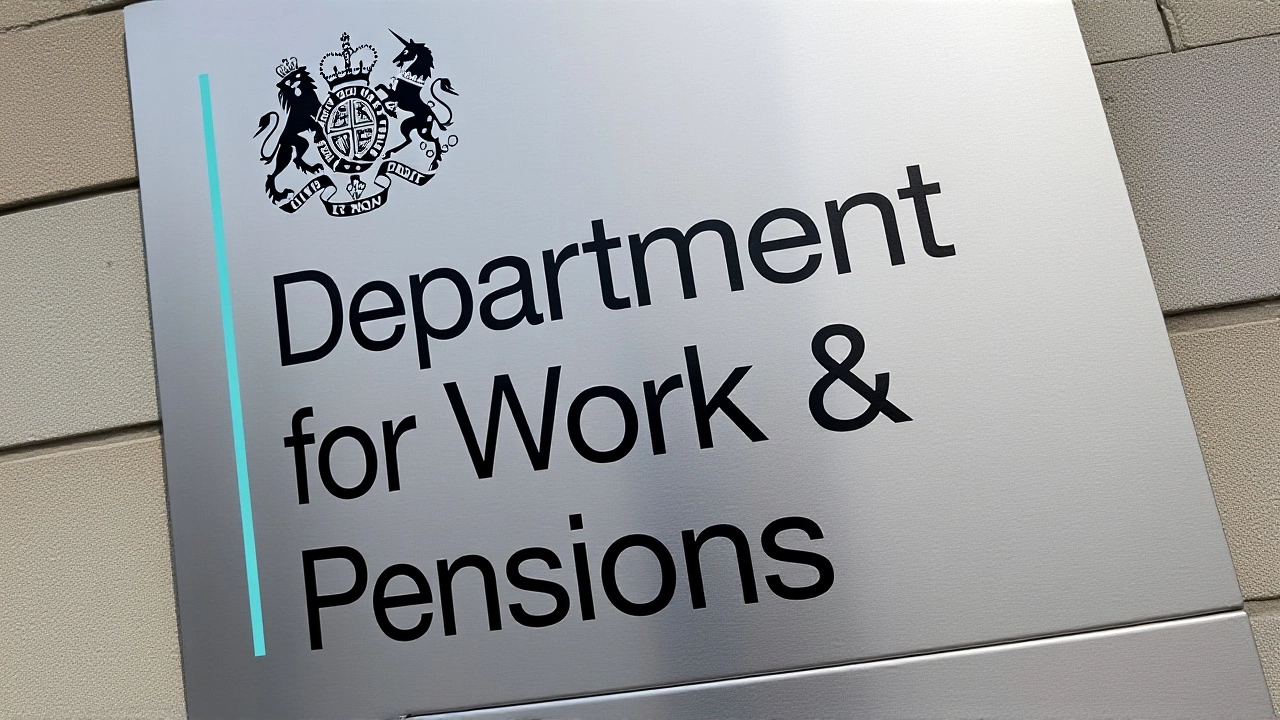When Department for Work and Pensions rolled out its 2025 reform plan, the headline was stark: certain retirees could see their weekly check shrink by as much as £160 a month. The timing couldn’t be more dramatic – the first tweak lands on 1 January 2025, followed by a second shift on 1 April that nudges the flat‑rate pension up to £230.30 a week. The twist is that both moves are meant to keep the system financially sustainable while still delivering on the long‑standing “triple lock” promise.
Background: How the State Pension Evolved
Britain’s pension story began in January 1909 with a modest 5‑shilling weekly dole for low‑income seniors. Fast‑forward to 6 April 2016, and the Pensions and Lifetime Savings Association helped shepherd a single‑tier system that replaced the old basic and additional layers. The current framework hinges on the “triple lock” – each year the pension rises by the highest of 2.5 %, consumer price inflation, or earnings growth.
But the demographic tide is turning. The Office for National Statistics projects a 55 % surge in the number of people at State Pension age – from 12.6 million in 2025 to 19.5 million by 2075. Those aged 85 and over will swell by 189 % over the same span. In plain English, a bigger crowd is tapping the same pot.
2025 Changes: What’s Coming in January and April
Two distinct adjustments are on the calendar:
- January 2025 – Contribution‑record recalibration: The DWP will tighten the verification of National Insurance contributions. If a retiree’s record is incomplete or disputed, the pension could be trimmed by up to £160 per month.
- April 2025 – New flat‑rate level: The full State Pension will be set at £230.30 per week, reflecting a revised earnings‑link component of the triple lock.
Both shifts are slated by the DWP as “necessary to align payments with actual contributions and to guard the fund’s long‑term health.” Critics argue the January move disproportionately hurts older adults who lack the digital skills or paperwork to sort out their records quickly.
Who Will Feel the Impact?
Anyone receiving the State Pension will be touched, but the most vulnerable are those with patchy contribution histories – often people who spent years in cash‑only jobs, informal care, or overseas stints. A recent analysis by TimbaBuild Australia highlighted that roughly 12 % of pensioners fall into this category, translating to an estimated 300,000 people facing a potential reduction.
Geographically, the effect is spread across the United Kingdom, but pockets of higher impact are expected in former industrial towns where self‑employment was common. The DWP has set up an appeal process, accessible through its website, allowing affected pensioners to submit evidence and request a review.

Reactions from Advocacy Groups and Government
“The reform is a double‑edged sword,” said Mel Stride, Secretary of State for Work and Pensions, in a press briefing at London. “We must protect the fund for future generations, yet we recognise the hardship for those caught out by administrative gaps.”
The Pensions and Lifetime Savings Association warned that without broader reforms – such as encouraging private savings and extending the working age – the system could face a shortfall of £5 billion by the end of the decade. Their “Five Steps To Better Pensions” report urges the government to pair the 2025 tweaks with incentives for delayed retirement and clearer guidance on National Insurance record‑keeping.
Consumer groups echoed the concern, noting that many seniors rely on a single source of income. “A sudden £160 cut can be the difference between keeping the heat on and facing a cold night,” said a spokesperson for Age UK, a charity that supports older adults.
What the Demographics Mean for the Future
The swelling pension‑age population isn’t just a numbers game. It reshapes public finance, healthcare demand, and even housing markets. The ONS data suggest that the ratio of pension‑age adults to the working‑age population will climb from 1 in 4.5 today to 1 in 3.5 by 2075. That shift could pressure wages, tax revenues, and the sustainability of other welfare programs.
Some economists argue that the triple lock, while generous, may be fiscally untenable in the long run. If earnings growth consistently outpaces inflation, the lock forces larger annual hikes. Conversely, if inflation spikes, the lock could lead to unexpected spikes in pension payouts, stressing the budget.

Next Steps and What Retirees Can Do
For anyone approaching pension age, the advice is simple: check your National Insurance record now. The DWP’s online portal lets you view contributions dating back to 1975, and you can request corrections if you spot gaps. If you’re unable to go online, you can call the helpline – a number prominently displayed on the DWP website.
Should you receive a notice of a reduction, remember you have the right to appeal. Gather payslips, old employer contracts, or any evidence of overseas work, and submit them within 30 days of the notice. Legal aid may be available for low‑income retirees.
Looking ahead, the government has promised to review the triple lock by 2027, with the ONS set to release a mid‑decade population forecast in 2026. Keep an eye on those updates; they’ll shape the next round of pension reforms.
Frequently Asked Questions
How much could my State Pension be reduced in January 2025?
If the DWP finds gaps in your National Insurance record, the maximum cut is £160 per month. Most affected pensioners see smaller reductions, depending on the size of the missing contributions.
Who is eligible for the £230.30 weekly flat‑rate pension from April 2025?
All people who reach State Pension age on or after 6 April 2016 are entitled to the new flat‑rate amount, provided they have the minimum required National Insurance contributions.
What can I do if I think my contribution record is wrong?
Log into the DWP’s online portal to view your record. If you spot errors, you can submit correction requests online or by post, attaching relevant documents like payslips or HMRC statements.
Why is the government changing the pension formula now?
Demographic forecasts show a 55 % rise in pension‑age adults by 2075, which would strain the pension fund. The DWP says the 2025 adjustments are a pre‑emptive step to align payouts with actual contributions and protect the system’s solvency.
Will the triple lock continue after 2025?
The government has pledged a review by 2027. The triple lock remains in place for now, but any future changes will depend on economic performance and the outcomes of the upcoming ONS demographic reports.
